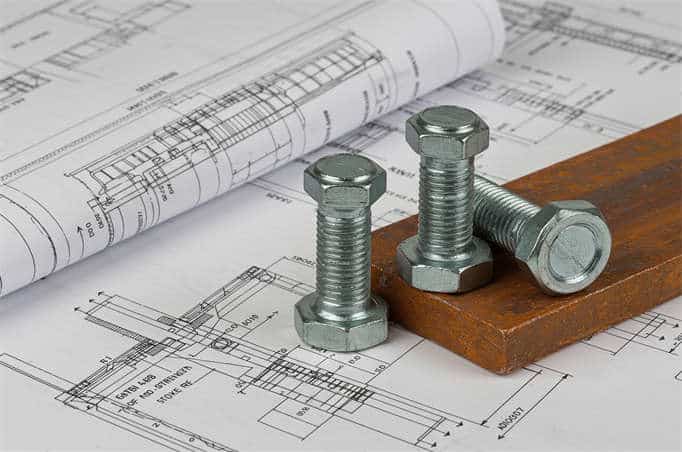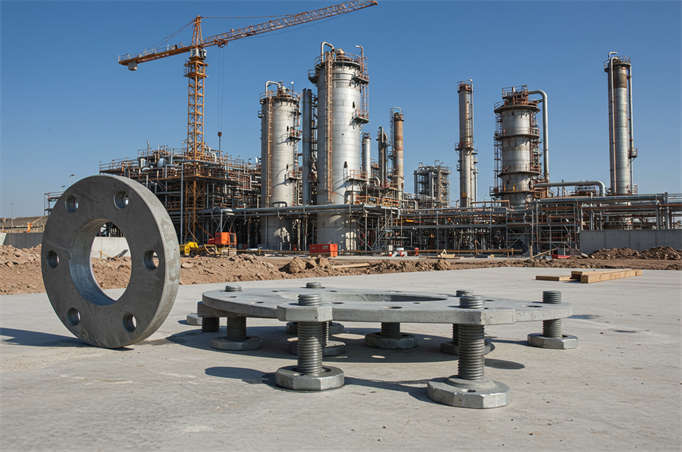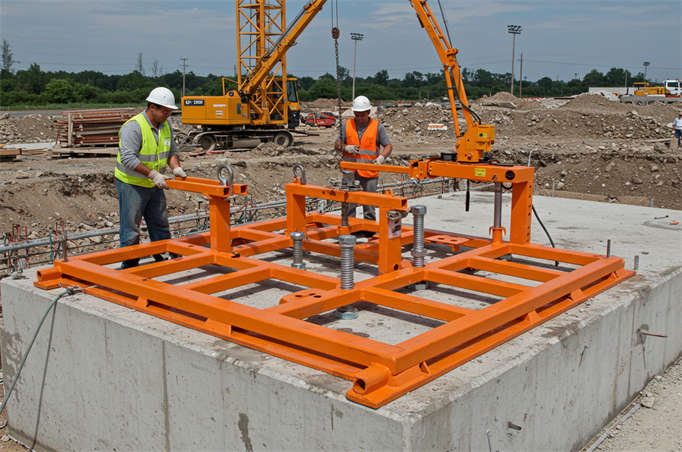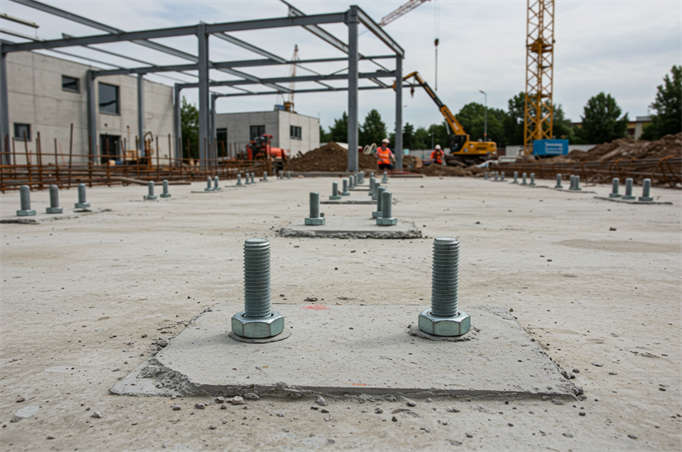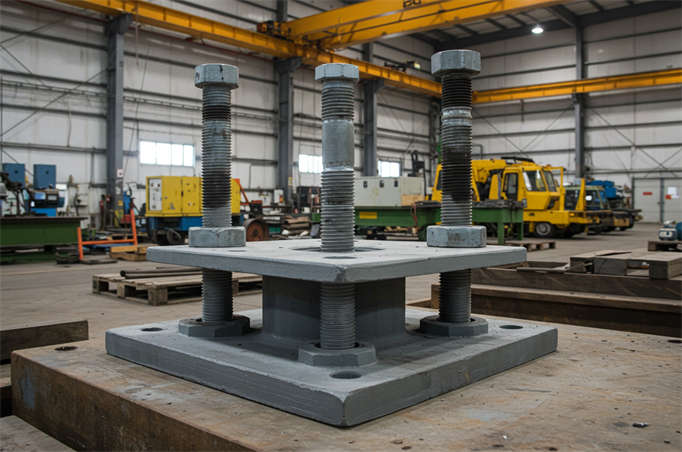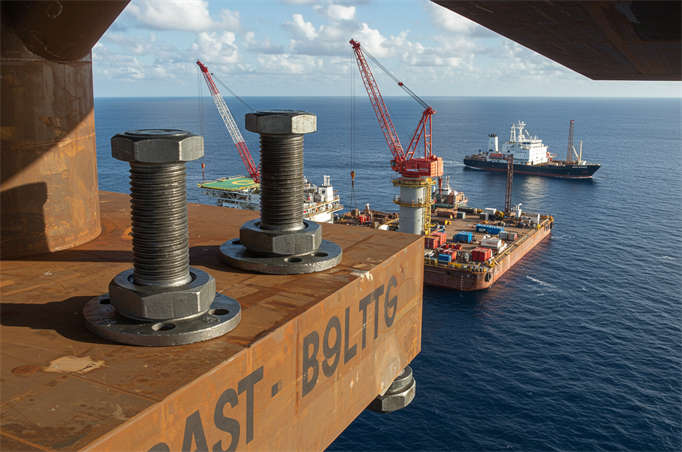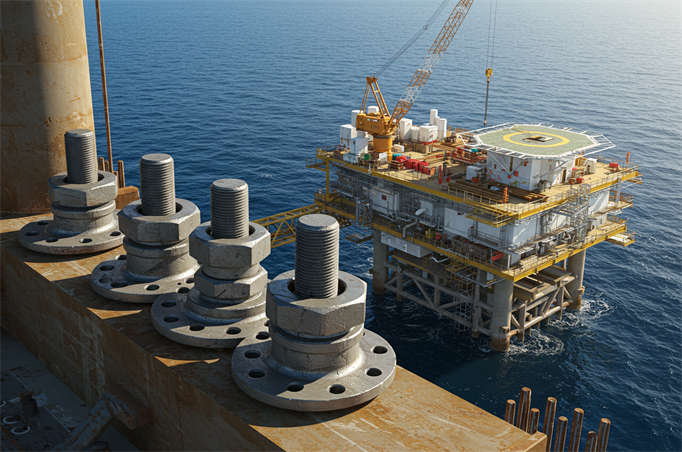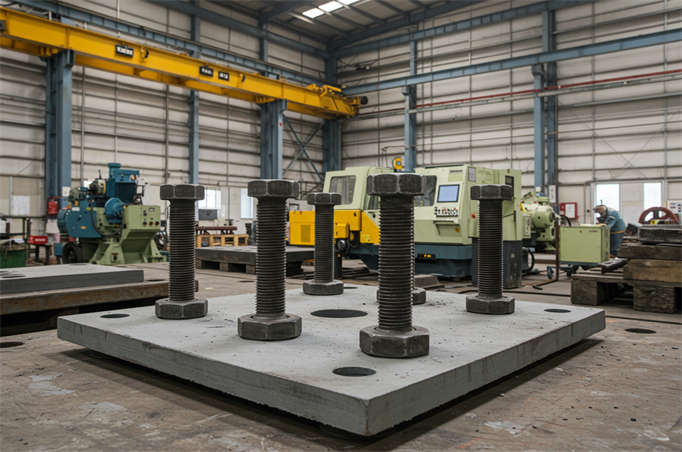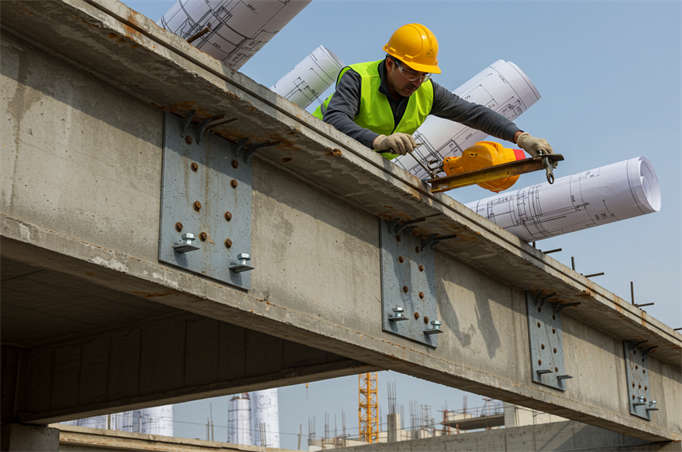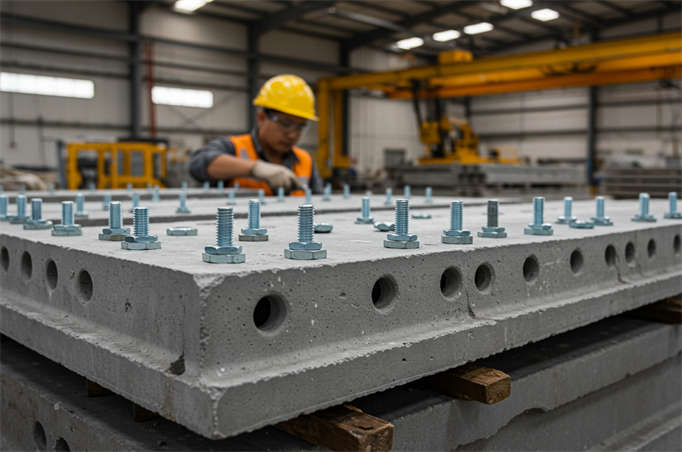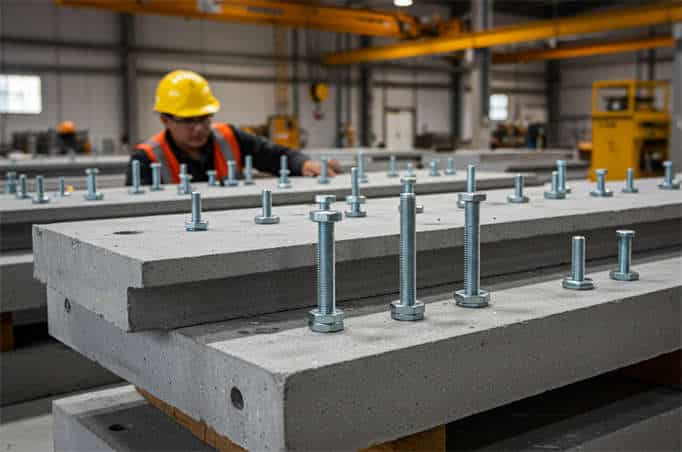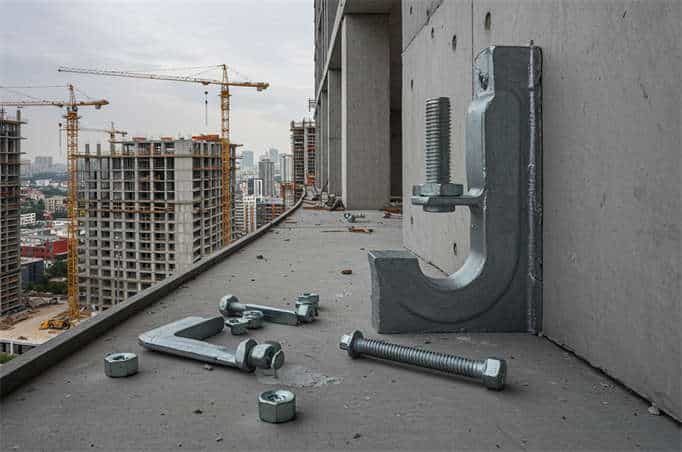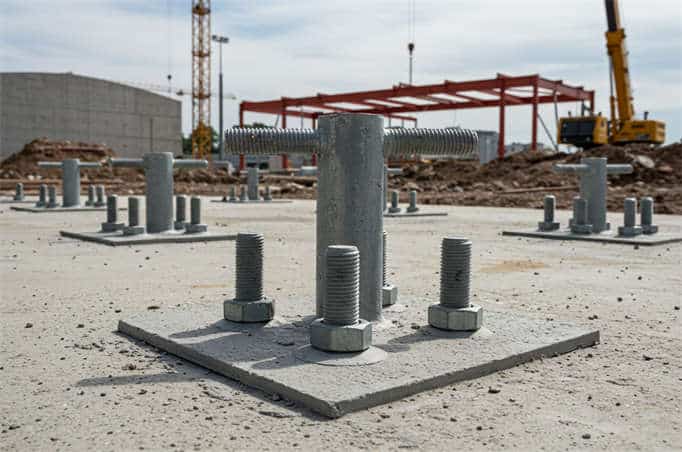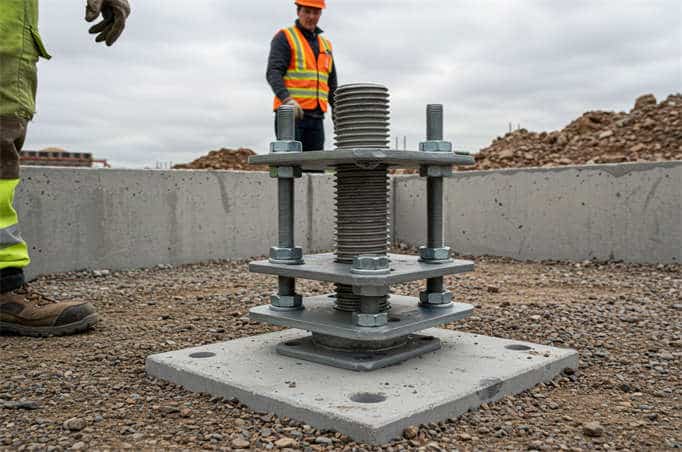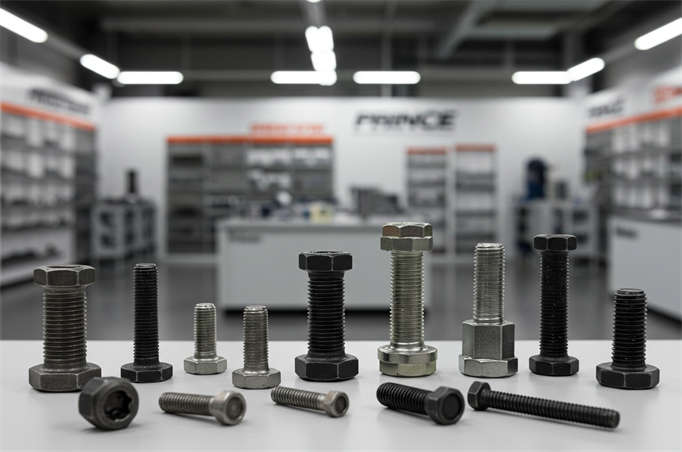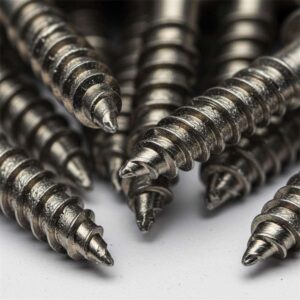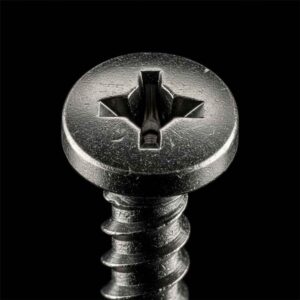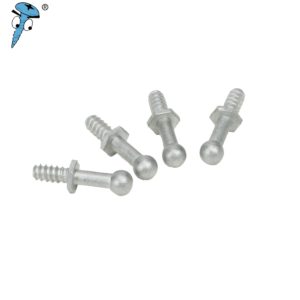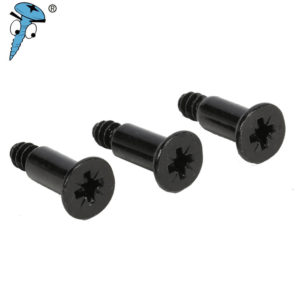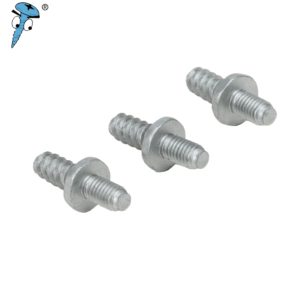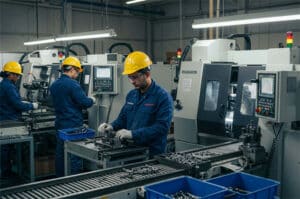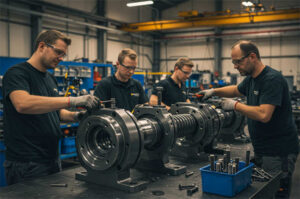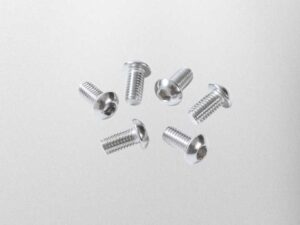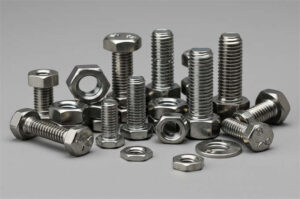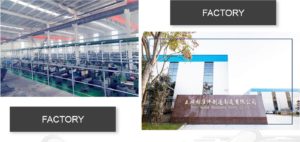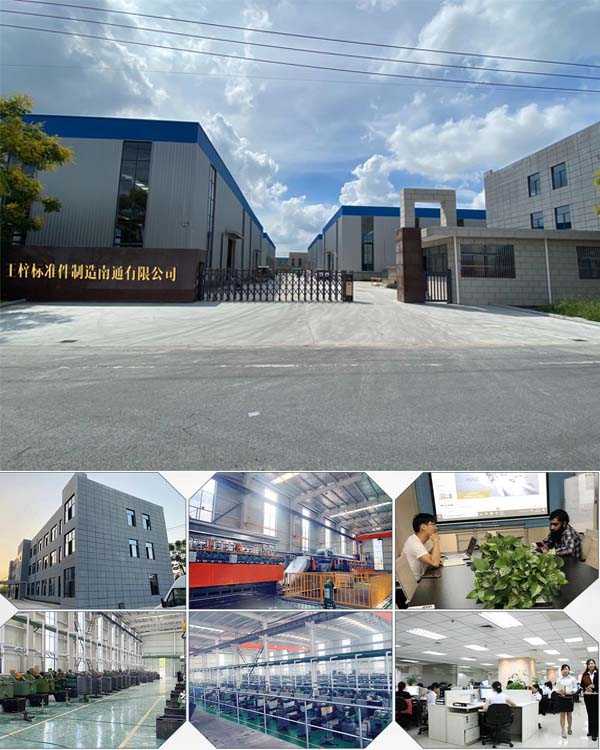The secure and robust connection of structures and equipment is paramount in the construction and engineering sectors. At Prince Fastener, we understand that the key to a solid foundation lies in the quality and reliability of the components used. Today, we delve into cast-in bolts, also known as embedded bolts, a crucial yet often overlooked element in building and industrial installations.
Cast-in bolts play a pivotal role in ensuring the stability and longevity of structures. The unsung heroes anchor heavy machinery, steel structures, and various architectural elements to concrete foundations. With our extensive experience and expertise in the fastener industry, Prince Fastener has been dedicated to providing high-quality cast-in bolt solutions for various projects. From large-scale industrial complexes to intricate architectural designs, our cast-in bolts have stood the test of time, offering exceptional performance and durability.
In this blog post, we will explore the definition, features, applications, installation processes, technical challenges, and how to select the right cast-in bolts for your specific project needs. We aim to equip you with the knowledge and insights to make informed decisions when choosing and utilizing cast-in bolts. Whether you are an engineer, contractor, or project manager, this guide will serve as a comprehensive resource to help you navigate the complexities of cast-in bolt systems and optimize their use in your construction endeavors.
At Prince Fastener, we understand the critical role of cast-in bolts, which are fasteners we embed in concrete structures beforehand. Their primary purpose is to connect and secure subsequent equipment, components, or structures. Here’s what you need to know:
1. Definition and Characteristics of Cast-in Bolts
Cast-in bolts typically come in steel pipe or plate forms (like anchor bolts). Their key characteristic, distinguishing them from regular bolts, is that we embed them into the concrete before it hardens.
Common alternative names include anchor bolts and embedded parts. We categorize them by type, such as L-shaped, J-shaped, and base plate types.
2. Application Scenarios for Cast-in Bolts
You’ll find our cast-in bolts extensively used in steel structure projects, curtain walls, pipe supports, and the installation of large mechanical equipment (like papermaking machinery). They connect, secure, and transfer loads effectively.
In structural nodes like concrete beam-column junctions, we ensure cast-in bolts avoid dense reinforcement areas to minimize construction conflicts.
3. Installation Process and Techniques for Cast-in Bolts
The main steps we follow include determining the embedding position and marking lines, tying the rebar cage, placing the bolts after checking the bolt frame dimensions, adjusting for positioning, and pouring the concrete.
We might use specialized flanges or positioning systems for complex projects to aid precise installation. For example, we can fix multiple anchor bolts using the bolt holes on a circular flange.
4. Technical Challenges and Solutions for Cast-in Bolts
In densely reinforced areas (like concrete beam-column joints), we plan the bolt paths in advance to prevent collisions with the main reinforcement. When necessary, we employ customized positioning tools.
Embedding large equipment (like papermaking machinery) may involve special techniques. For instance, we might use rectangular, square tubes to create a temporary base plate and precisely locate holes according to design drawings.
5. Distinguishing Related Concepts from Cast-in Bolts
Whether sleeve connections qualify as cast-in bolts depends on the specific situation. However, traditional cast-in bolts emphasize direct embedment in the concrete for anchoring.
We also use embedded plates, not just for fixing reinforcing bars but also for the pre-connection of equipment bases or other structural components.
Prince Fastener emphasizes that cast-in bolts are crucial in ensuring the safety and functionality of building projects and equipment installations. Their design and construction require careful consideration of structural safety and subsequent installation’s convenience.
What Role Do Cast-in Bolts Play in Construction?
At Prince Fastener, we recognize the vital roles cast-in bolts fulfill in construction:
Connection and Fixation
We embed cast-in bolts in concrete structures beforehand. Their exposed parts (protruding bolt threads) are then fixed, and installed components or equipment, such as steel structures, curtain walls, and mechanical equipment, are subsequently fixed. This creates reliable mechanical connections. Common applications include fixing bridge components and connecting the bases of papermaking machinery.
Load Transfer
Cast-in bolts effectively transfer the loads from the upper structure (such as wind loads, seismic forces, or equipment vibrations) to the concrete foundation. This ensures the overall stability of the structure. For example, when steel structures anchor to the foundation using cast-in bolts, their resistance to overturning increases.
Adjustment and Adjustability
Some of our cast-in bolt designs allow for adjusting the height or level of components by manipulating the nuts. For instance, using a combination of bolts and steel plates as an embedded form allows for fine-tuning the position during installation to meet construction precision requirements.
Precise Positioning and Construction Convenience
We often install cast-in bolts with positioning frames or specialized molds in complex projects. We ensure precise positioning by calibrating with total stations or theodolites before pouring concrete in one go. This eliminates the need for secondary drilling during subsequent installation, improving efficiency and reducing structural damage.
Prince Fastener understands that cast-in bolts are a critical guarantee for the safety and functionality of building structures, especially in scenarios requiring frequent assembly and disassembly or those subject to dynamic loads (like equipment bases). Their role is paramount.
What Are the Common Specifications and Materials for Cast-in Bolts?
Prince Fastener offers cast-in bolts in various standard specifications and materials:
I. Common Specifications
Thread Specifications:
For L-shaped anchor bolts (also known as J-shaped cast-in bolts), common thread specifications include M12, M14, M16, M18, M20, M22, M24, M27, M30, M32, and M33.
Other types (such as I-beam embedded parts with square clamps) may use specifications like M20 and M36. We customize the length according to project needs (e.g., 700mm, 1000mm).
Diameter Range:
We typically manufacture these from round steel with diameters ranging from 20mm to 60mm. The specific dimensions depend on the design requirements.
II. Common Materials
Ordinary Strength Materials:
Most of our cast-in bolts use Q235B steel, which offers a lower cost and meets the requirements of conventional projects.
High Strength Materials:
We select Q345B or 16Mn steel for applications with higher load-bearing requirements.
In special cases (such as high tensile strength demands), we use 8.8-grade high-strength products made from 40Cr steel.
Occasionally, we also process them using Grade II or Grade III rebar.
III. Other Forms
Based on the processing method, we offer them in forms like raw material, rough bar, and fine bar.
According to shape, besides L-shaped, we also provide base plate types and circular flange fixed types.
At Prince Fastener, we ensure that the selection of these specifications and materials aligns with specific project needs and load conditions to guarantee structural safety and construction efficiency.
How to Choose the Right Cast-in Bolt Specifications to Meet Project Needs?
At Prince Fastener, we guide you in selecting the appropriate cast-in bolt specifications by comprehensively considering load requirements, structural design, and construction conditions. Here’s our approach:
1. Determine Specifications Based on Load Requirements
You must choose the corresponding bolt diameter based on the load the cast-in bolt must bear (such as equipment weight, wind loads, seismic forces, etc.). For example, we match the bolt specifications (like M12, M20, etc.) for bracket-like components according to the load calculation results.
For large-diameter cast-in bolts for large equipment foundations (e.g., diameters exceeding 20mm), we determine the diameter and anchoring depth through mechanical calculations, considering the equipment’s vibration or dynamic load characteristics.
2. Refer to Design Drawings and Standards
Engineering design drawings typically clearly indicate the bolt specifications (e.g., M24), length, and installation spacing. For example, in petrochemical projects, we strictly verify that the diameter, thread parameters, and length of anchor bolts comply with the design requirements.
We also refer to local standards or industry specifications (such as the “Construction Installation Sub-item Engineering Construction Process Regulations”) to ensure the selected specifications meet construction acceptance requirements.
3. Optimize Selection Based on Construction Conditions
In densely reinforced areas (such as beam-column joints), we prioritize using thin-shank bolts or adjusting the layout to avoid conflicts with the main reinforcement.
If post-installation height adjustment is necessary, we can use a double-layer positioning plate structure, making fine adjustments with additional steel plates and nuts (e.g., M24 additional cast-in bolts).
4. Material and Environmental Adaptation
In conventional environments, Q235B steel is sufficient. For scenarios with high strength or corrosion resistance requirements (such as chemical facilities), we select Q345B, 40Cr, or stainless steel.
5. Verify Installation Feasibility
In complex projects, we can confirm the rationality of the specifications through simulated installation tests (such as using a circular flange to position multiple bolts simultaneously), avoiding rework.
At Prince Fastener, we emphasize that the selection of cast-in bolts should follow a process of “load calculation → design verification → construction adaptation,” making comprehensive decisions strictly based on drawings, specifications, and site conditions.
How to Choose the Right Cast-in Bolt Material?
At Prince Fastener, we assist you in selecting the appropriate cast-in bolt material by comprehensively considering mechanical properties, environmental conditions, and construction requirements. Here’s our method:
1. Meet Basic Mechanical Properties
Based on the load type (tensile, shear, fatigue loads) and strength requirements, we prioritize using carbon steel or low alloy steel, such as Q235B (ordinary strength), Q345B (high strength), or 40Cr (high tensile strength).
We verify the material’s toughness and resistance to brittle fracture for bolts subjected to dynamic loads or low-temperature environments.
2. Emphasize Corrosion Resistance
In humid, acidic, or marine environments, we prioritize using stainless steel (such as 304 or 316) or corrosion-resistant alloy steel to prevent anchoring failure due to corrosion.
If ordinary steel is used, we implement surface anti-corrosion treatments such as hot-dip galvanizing or epoxy coating and ensure that the entire embedded part has no rust risks at the contact points with concrete.
3. Avoid Electrochemical Corrosion
We recommend selecting bolts, nuts, washers, and embedded round steel made of the same material or materials with similar electrochemical potentials to prevent electrochemical corrosion caused by potential differences.
4. Adapt to Construction and Installation Conditions
For scenarios requiring post-installation height adjustment, we can use detachable embedded components (such as matching flanges) and ensure the material has sufficient ductility to accommodate fine-tuning operations.
In ultra-long anchorage or large-diameter applications (such as wharf rail beams), we verify the material’s yield strength matching the concrete’s bond strength.
5. Follow Design Codes and Standards
We strictly adhere to the material grade specified in the design drawings while referencing standards such as the “Construction Installation Sub-item Engineering Construction Process Regulations” to ensure the material performance meets acceptance requirements.
At Prince Fastener, our material selection follows the principle of “strength meets requirements → environment adaptation → economic rationality.” When necessary, we can verify long-term service performance through simulated tests.
How do you determine the size and specifications of cast-in bolts?
At Prince Fastener, we guide you in determining the size and specifications of cast-in bolts by considering design requirements, load calculations, and construction conditions. Here are the specific steps:
1. Based on Design Drawings and Load Requirements
According to the engineering design drawings, we identify the nominal diameter (e.g., M12, M20) and length of the bolts. We also determine the tensile force, shear force, and dynamic loads they need to withstand through mechanical calculations. For example, we select large-diameter bolts (e.g., M30 and above) for large equipment foundations based on the equipment’s vibration parameters.
We ensure compliance with acceptance requirements by adhering to standards such as the “Construction Installation Sub-item Engineering Construction Process Regulations.”
2. Verify Concrete Anchorage Performance
The bolt’s anchorage depth must meet the concrete’s bond strength requirements. Typically, the anchorage length should be greater than 15 times the bolt diameter (e.g., for an M20 bolt, the recommended anchorage depth is ≥300mm).
For high-load scenarios (such as the foundations of tower equipment), we can use the inverted construction method, adjusting the anchorage depth by positioning the template with double nuts (e.g., the first positioning nut is 100-150mm from the top of the foundation).
3. Adapt to Construction Conditions
In densely reinforced areas (such as beam-column joints), we prioritize using thin-shank bolts or adjusting the layout to avoid conflicts with the main reinforcement.
In complex projects, we can use circular flanges to position multiple bolts, ensuring installation accuracy simultaneously.
4. Verify Installation Accuracy
After installation, we calibrate the bolt coordinates using a theodolite or total station. The allowable deviation range is generally ±2mm (e.g., the deviation of the centerline position of embedded parts in prefabricated components needs to be measured and verified with a ruler).
5. Optimize for Special Scenarios
For scenarios requiring post-installation height adjustment, we can use detachable embedded components (such as matching flanges) and make fine adjustments to the height using additional steel plates and nuts.
In summary, at Prince Fastener, the selection of cast-in bolts follows a process of “design calculation → anchorage verification → construction adaptation → accuracy verification,” making comprehensive decisions based on drawings, specifications, and site conditions.
At Prince Fastener, we take pride in our commitment to excellence and innovation in the fastener industry. Our cast-in bolts are meticulously designed and manufactured to meet the highest quality and performance standards. We understand that the success of any construction project hinges on the reliability of its foundational components, and our cast-in bolts are engineered to provide that assurance.
By choosing Prince Fastener’s cast-in bolts, you are investing in your project’s structural integrity and safety. Our products undergo rigorous testing and quality control processes to withstand the demands of various construction environments and applications. We offer various cast-in bolt specifications and materials to cater to different project requirements, whether for heavy machinery installation, steel structure anchoring, or any other application where secure and stable connections are crucial.
This blog post has provided valuable insights into the world of cast-in bolts. It has equipped you with the knowledge to select the appropriate project solutions. Remember, when it comes to cast-in bolts, making the right choice can significantly impact the success and durability of your construction endeavors. At Prince Fastener, we support you every step of the way, offering expert advice, reliable products, and exceptional service to ensure your projects are built on a solid foundation.
For more information about our cast-in bolt products and services, please visit our website or contact our team of experts. We look forward to partnering with you and contributing to the success of your construction projects.
